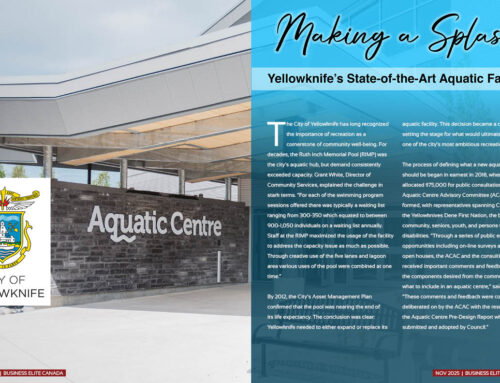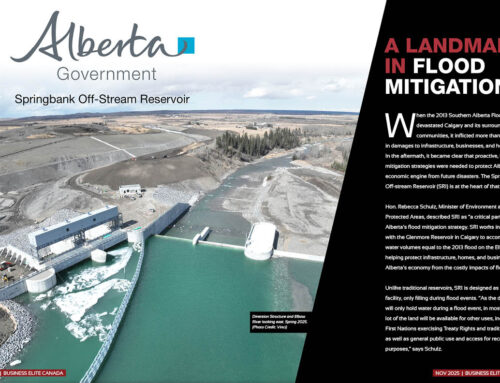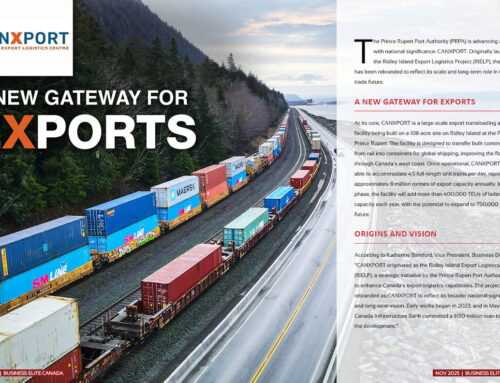In Richmond, British Columbia, the Steveston Interchange Project is transforming how people and goods move through one of the region’s most important transportation corridors. As a key component of the broader Highway 99 Tunnel Program, this Project is a forward-thinking investment in safety, efficiency, and long-term regional growth.
“The new five-lane Steveston Interchange Project is key to improving travel along the Highway 99 corridor,” says Dustin Bergstrom, Project Director. “It’s designed to integrate seamlessly with the new eight-lane, toll-free immersed tube tunnel that will be built under the Fraser River to replace the existing George Massey Tunnel.”
Once complete in the fall of 2025, the interchange will feature two eastbound lanes and three westbound lanes, including a dedicated westbound left-turn lane. This new configuration is tailored to improve vehicle flow, pedestrian safety, and cyclist access, while significantly reducing congestion on Steveston Highway and the on- and off-ramps of Highway 99.
Highway 99
The Project addresses reliability and safety concerns that have grown over the decades. The original two-lane overpass was built more than 60 years ago and could no longer meet the demands of the region’s rising population and vehicle volumes. “The original overpass had only a single narrow sidewalk and wasn’t easily accessible for pedestrians or cyclists,” Bergstrom explains. “The new design includes separated and protected sidewalks and cycle lanes on both the north and south sides of the structure, providing safe and comfortable passage for all users.”
In addition to enhancing accessibility, the new interchange adheres to modern structural and seismic design standards. “We’ve ensured a clearance of five metres under the new overpass—half a metre more than the original—aligning with current safety standards,” he adds.
Construction on the Steveston Interchange began in 2022 and is being executed in two phases to minimize disruptions to the travelling public. In Phase 1, crews constructed a two-lane structure on the north side of the existing overpass, which was opened to traffic in January 2025. With traffic now diverted to this new structure, the original overpass was dismantled, clearing the way for Phase 2.
“Phase 2 began in February 2025 with ground improvements and pile driving,” Bergstrom says. “Once this groundwork is complete, we’ll move into constructing piers and installing concrete girders to form the bridge deck this summer.”
To date, the team has completed several major tasks, including utility relocations, foundation work, drainage upgrades, fabrication of all concrete girders, the construction of a new sidewalk, and the widening of Highway 99 off-ramps.
The design of the new interchange offers a broad range of mobility benefits. “We’re adding new traffic lanes in each direction across the overpass and a dedicated left-turn lane for westbound traffic,” Bergstrom says. “Bus operations are also being enhanced with prioritized traffic signals and a dedicated bus lane at the northbound off-ramp.”
For the first time, the interchange will offer walking and cycling connections on both sides of Steveston Highway across Highway 99. These multimodal improvements are key to supporting the growing diversity of transportation needs in Richmond and across Metro Vancouver.
The Steveston Interchange is also part of a larger effort to strengthen regional connectivity and ensure the infrastructure can meet future demands. “This Project facilitates travel to critical transportation hubs such as Vancouver International Airport and the BC Ferries Tsawwassen Terminal,” says Bergstrom. “It supports the projected traffic growth that will come with the increased Fraser River crossing capacity.”
Transit Enhancements
The Project is being delivered by Transportation Investment Corporation on behalf of B.C.’s Ministry of Transportation and Transit. Flatiron Constructors Canada Limited, partnered with Urban Systems Ltd., was selected as the Design-Builder. The team includes five major subcontractors and more than 29 minor service agreements, many involving First Nations-affiliated companies.
The benefits of the completed interchange are far-reaching. “We’re improving travel reliability for business and regional goods movement and reducing delays for priority trips,” Bergstrom says. “By supporting transit enhancements and increasing the efficiency of traffic flow, we’re also helping to reduce greenhouse gas emissions and other air pollutants.”
Environmental and social considerations have been integral throughout the planning and execution phases. The Project supports a healthy environment, enhances active transportation, and builds a more sustainable and resilient region.
Equally important has been the Project’s ongoing engagement with the public, local governments, transit agencies, and First Nations communities. “We’ve held regular meetings with groups such as the City of Richmond, TransLink, and Coast Mountain Bus Company to keep them updated on construction impacts,” Bergstrom notes.
Public Involvement
The public has been kept informed through newsletters, construction notices, website updates, and in-person pop-up events. For First Nations engagement, the Project team has taken a Nation-specific approach. “We began consultation with Identified Indigenous Groups in 2019, and that consultation continues today,” says Bergstrom. “First Nations site visits are scheduled monthly and tailored to each Nation’s communication preferences and involvement.”
As the Project heads toward completion, the long-term value of the Steveston Interchange to the regional economy and transportation network is already becoming clear. It is a project built not only for today’s demands, but for the needs of future generations.
“We’re building something that will serve Richmond and the entire region for decades to come,” says Bergstrom. “It’s about creating safer, more efficient travel for everyone—drivers, transit users, cyclists, and pedestrians alike.”
For more information, please visit www.highway99tunnel.ca/project-overview/






